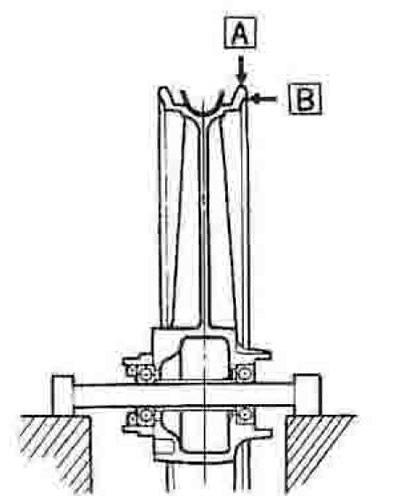2. To check axial (side-to-side) runout, attach a dial gauge to the fork slider or the swingarm and position its stem against the side of the rim (see illustration). Spin the wheel slowly and check the amount of runout at the rim. To accurately check radial (out of round) runout with the dial gauge, remove the wheel from the machine, and the tyre from the wheel. With the axle clamped in a vice and the dial gauge positioned on the top of the rim, rotate the wheel and check the runout.

11.2. Check the wheel for radial (out-ofround) runout (A) and axial (side-to-side) runout (6)
3. An easier, though slightly less accurate, method is to attach a stiff wire pointer to the fork slider or the swingarm and position the end a fraction of an inch from the wheel (where the wheel and tyre join). If the wheel is true, the distance from the pointer to the rim will be constant as the wheel is rotated. Note: If wheel runout is excessive, check the wheel bearings and axle very carefully before replacing.
4. Visually inspect the wheels for cracks, flat spots on the rim, and other damage. Look very closely for dents in the area where the tyre bead contacts the rim.
5. If damage is evident, or if runout in either direction is excessive, the wheel will have to be rebuilt by a professional wheel builder who will replace the damaged components with new ones, then make sure the wheel is properly aligned, tensioned and balanced.
